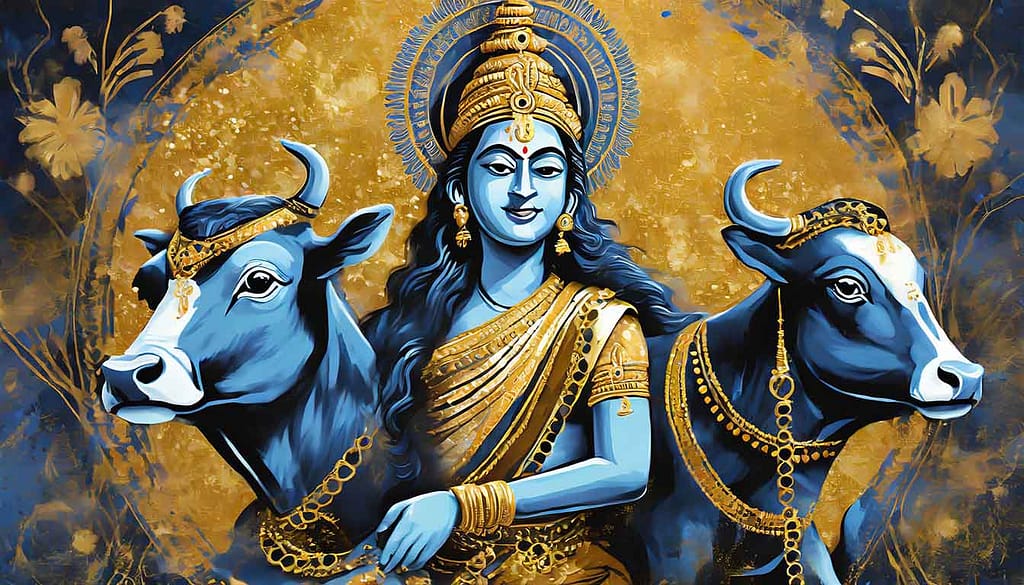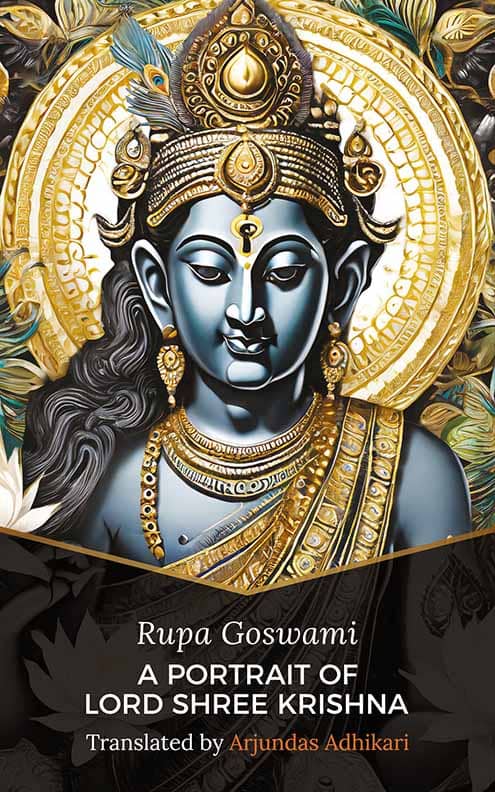Mythological figures are sadly very yesterday, today. Needs addressing because the feats/pastimes of the god, demigod, half-mortal, demon, etc. witnessed in action, are cathartic, that is to say, the emotional response engendered by them can help make sense of the world. We have contemporary heroes, heroines, anti-heroes and heroines, obviously, but it’s not hard to see how timeless and universal values like equality, sustainability and fair rule have been ably championed by legends throughout the ages, among which the legend of Krishna in Rupa Goswami’s Vidagdha Madhava stands out significantly.
For starters, in the Vedic history books, aka Itihasa (literally ‘thus it was’) Krishna is said to have incarnated specifically to restore balance on a severely taxed planet Earth (a thousand years before Copernicus, the Vedas considered the earth round cf. vedic astronomy) ravaged and polluted by the selfishness of avaricious villains. Krishna was charming enough, but he gave those cads short shrift big time styley. Yet, formidable as He was as a hero, and though by many He is regarded as God in Person, Rupa Goswami’s A Portrait of Lord Shree Krishna shows the Lord’s vulnerable side, ruled by the ecstatic love of the cowherdess (gopi) Radharani. The theme of the play as a whole is very much an exposition of gender power play, but predisposes in favour of the cowherdesses over Krishna and not vice-versa.
Shree Krishna is rarely pictured without a cow or two with Him. He’s well known for loving cows. In the matter of representing the cause of ahimsa, or non-violence, Shree Krishna is exemplar. Also, Rupa Goswami’s very spiritual Indian drama Vidagdha Madhava is littered with expressions of respectful admiration for the unspoilt natural beauty that is the backdrop for the village that features in his drama. Indian Prime Minister Modi recently praised the admiration Krishna has for the natural world, regarding a proposal for selecting Krishna as a suitable icon to represent India’s struggle to improve the conditions of the environment.
To boot, if we look to the origins of meditation and mindfulness as they have been practised in India, we find meditation on Krishna and His pastimes consistently advocated as the principle point of focus. That would make Rupa Goswami’s A Portrait of Lord Shree Krishna not only a transporting piece of entertainment but also an uplifting, life-affirming kind of meditation.
What is possibly the most famous of all of India’s texts, the Bhagavad Gita, consists of Krishna’s advice to His friend Arjuna (my namesake) who faces fighting his relatives in an imminent fratricidal conflict. In today’s world beset by conflict, Rupa Goswami’s Vidagdha Madhava may also remind us of Krishna’s insightful words of solace for those, who like Arjuna, face catastrophic upheavals.



Hi, this is a comment.
To get started with moderating, editing, and deleting comments, please visit the Comments screen in the dashboard.
Commenter avatars come from Gravatar.